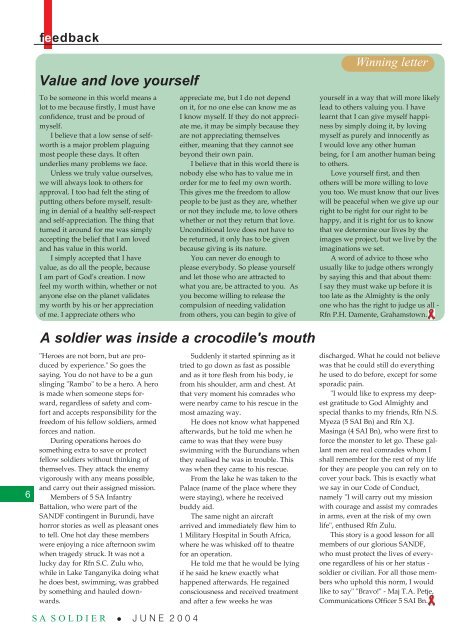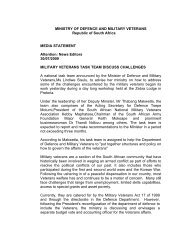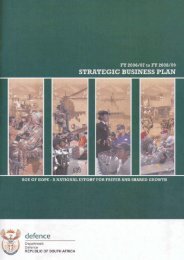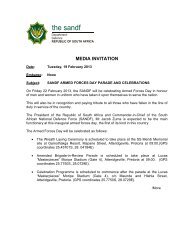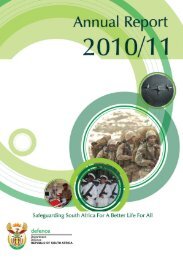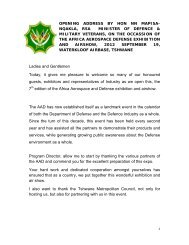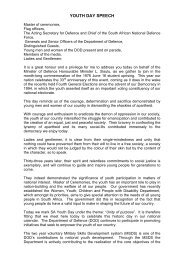eyes, neck and face. New versions <strong>of</strong> the toy contain batteries to make the toy flash; thesebatteries can tear through the toy easily, posing a choking hazard if swallowed.In <strong>June</strong> 2005, Illinois became the first state to ban this toy. At the federal level, the CPSCshould ban all sales <strong>of</strong> yo-yo water balls and similar toys in the United States.LOUD TOYSAlmost 15 percent <strong>of</strong> children ages 6 to 17 show signs <strong>of</strong> hearing loss, according to a 1998 studypublished in the Journal <strong>of</strong> the American Medical Association. In November 2003, ASTMpromulgated a new acoustics standard for toys, setting the loudness threshold for most handheldtoys at 90 decibels; the Occupational Safety and Health Administration (OSHA) reportsthat prolonged exposure to sounds at 85 decibels or higher can result in hearing damage.PIRG researchers found: Several toys currently on toy store shelves may not meet the ASTM standards forappropriately loud toys. Several toys currently on toy store shelves exceed 100 decibels when measured at closerange.CPSC should enforce the ASTM acoustics standards for loud toys and consider strengtheningthe standards to reduce the sound threshold for hand-held toys from 90 decibels to 85 decibels.Toy manufacturers should go above and beyond the standards and not make hand-held toysthat produce sounds louder than 85 decibels.TOXIC CHEMICALS IN TOYSSome toys can pose hidden hazards, exposing children to dangerous chemicals that are linkedto serious health problems. PIRG researchers found: Manufacturers are selling play cosmetic sets that include nail polish containing toxicchemicals, such as toluene and xylene. Since children <strong>of</strong>ten put their hands in their mouths,nail polish applied to fingernails <strong>of</strong>fers a direct route <strong>of</strong> exposure. Even though the European Union has banned or imposed wide restrictions on the use <strong>of</strong>six phthalates in toys and childcare products, some manufacturers <strong>of</strong> children’s productscontinue to use phthalates in toys for the U.S. market. Phthalates, a class <strong>of</strong> chemicals used to“plasticize” or s<strong>of</strong>ten otherwise hard PVC plastic material, have been linked to reproductivedefects and other health problems. In response to consumer concern about phthalates, some manufacturers are labelingtheir products as “phthalate-free.” The U.S. government, however, does not regulate the“phthalate-free” label or ensure that products labeled “phthalate-free” actually do notcontain phthalates. To test the reliability <strong>of</strong> the “phthalate-free” label, PIRG commissionedlaboratory tests <strong>of</strong> eight s<strong>of</strong>t plastic toys labeled as not containing phthalates. Of the eighttoys tested, six contained detectable levels <strong>of</strong> phthalates.CPSC should ban phthalates in toys and other products intended for children under five andwork with the Federal Trade Commission to take immediate action to ensure that toysTrouble in Toyland 5
Effective control <strong>of</strong> aircraftA while ago I took part in ExerciseDRAGON, the main purpose <strong>of</strong>which was to practise our forcesfor a possible airborne mission intosub-Saharan Africa.This exercise took place from 24 to28 February in the training area <strong>of</strong> 6SAI Bn, Grahams-town. Aspects suchas air-assault landings, watercrossings and heliborne assaultswere tested.Although I believe we do not havethe aircraft to conduct a large-scaleoperation, I realise now that once thedoctrine is in place we will beprepared for whatever may happenin the future. We can always buythe aircraft, but getting the doctrinein place is not that easy.To get there, however, we have toprove the concept works, so I willventure as far as to say that until wehave executed a successful missionwe will be fighting all the way againstthe naysayers.It is more than carrying gunsBroederstroom Commando held afunction for the local learners inMarch 2004, which was organisedby Sgt Motholo, the communication<strong>of</strong>ficer <strong>of</strong> the Commando.Other guests were representativesfrom Spoornet and the <strong>Department</strong> <strong>of</strong>Welfare, who brought clothes for thechildren as gifts and they alsoarranged a braai for that afternoon.Both parties were inspired by a youthcamp, which was presented to thelocal farms' youth by BroederstroomCommando in July 2003.It was my first experienceI now share the views <strong>of</strong> a rathersmall group <strong>of</strong> people who believe inthis new concept, not only for interventionmissions into Africa, but alsoon the home front. We do not knowwhat will happen in ten years. If weare attacked, our defence will relyheavily on a highly mobile type <strong>of</strong>warfare.Who better to spearhead this thanthe airmobile forces. We can delay ordestroy flanking forces and, togetherwith the mechanised forces, surpriseand destroy this possible futurethreat.One <strong>of</strong> the most important pointsto remember about airmobile forces istheir fast turnaround time. We canproject force over a very wide theatre,attacking two forces within hours.Those <strong>of</strong> you who are still unsure <strong>of</strong>the feasibility <strong>of</strong> this new doctrineshould perhaps consult your trainingmanuals again and look up the basicsconcerning the principles <strong>of</strong> the attackattending an occasion for youth fromdisadvantaged communities.The weather was very bad. I wasvery touched, especially when I sawsome <strong>of</strong> the children in tatteredclothes and some not even wearingshoes.I planned to ensure that all commandosunder command <strong>of</strong> Group 15follow the same route in contributingtowards disadvantaged communities,and that being a soldier is not allabout carrying guns -Capt G.S. Nyezi, SO3 CommunicationOfficer Group 15 HQ.R200-00 prize for the best letterSA SOLDIER welcomes letters to the Editor. Short letters are more likely to bepublished, and all letters may be edited for reasons <strong>of</strong> style, accuracy or spacelimitations. Letters should preferably be typewritten and double-spaced. Allletters must include the writer's full name, address and home telephone number.The volume <strong>of</strong> letters we receive makes individual acknowledgement impossible.Please send your letters to: The Editor, SA SOLDIER Letters, Private Bag X158,Pretoria, 0001. Letters may also be faxed to (012) 355-6399 or sent via email tosasoldier@mil.za. We would like to hear your comments or ideas, particularlyabout matters affecting members <strong>of</strong> the <strong>Department</strong> <strong>of</strong> <strong>Defence</strong>. Regrettably,anonymous letters cannot be answered <strong>of</strong>ficially or published - Editor.and <strong>of</strong> war. Note things such as"<strong>of</strong>fensive actions", "surprise" and"the maintenance <strong>of</strong> morale".Look what happened during"Operation Thunderbolt", the Israeliraid on Entebbe, Uganda, to rescuetheir nationals who found themselvesthere after their aircraft had beenhijacked.They achieved success because <strong>of</strong>surprise and national pride andmorale went sky-high. Good luck tothose who are pioneering this newconcept and who understand that theairmobile concept is not just an airtransportoperation, but the effectivecontrol <strong>of</strong> aircraft and being able tothink at 250km/h -Capt W.G. Klokow, 6 SAI Bn.Woman and childabuseBoth women and children are victims<strong>of</strong> this terrible tragedy. This is whathappens any time, anywhere. It hurtsso much to see women and childrentreated as though they are not part<strong>of</strong> society. This is caused by humanSatanism and hatred. It will mostlikely see women and childrenturning into hobos and street kidsbecause <strong>of</strong> physical and sexual abuse.It is immoral to see men doing this totheir families or loved ones.Abuse inhibits the victim's feelingand emotions. The victim becomesmentally weak. Mostly they feel sickat heart, alone, afraid and powerless.If someone's life has been filled withabuse for a long time, that personreaches a point where he or she nolonger feels anything. Nothing seemsto matter anymore. Nothing seems tohurt. It is a disgrace.It is terrible to live in a world thathas turned into a heartless monster.Fellow Africans, let us be ashamed <strong>of</strong>ourselves.Let us show love. Let us showthat we are a caring nation. Let us notabuse our women and our children.Let us fight against their abuse -Rfn T.J. Motlokoa,Harrismith Commando.J U N E 2 0 0 4 • S A S O L D I E R7


